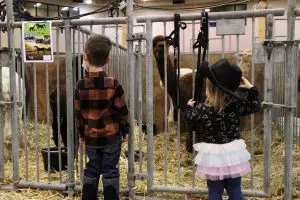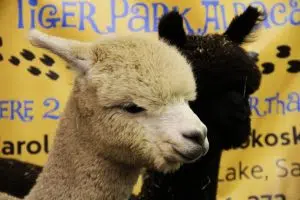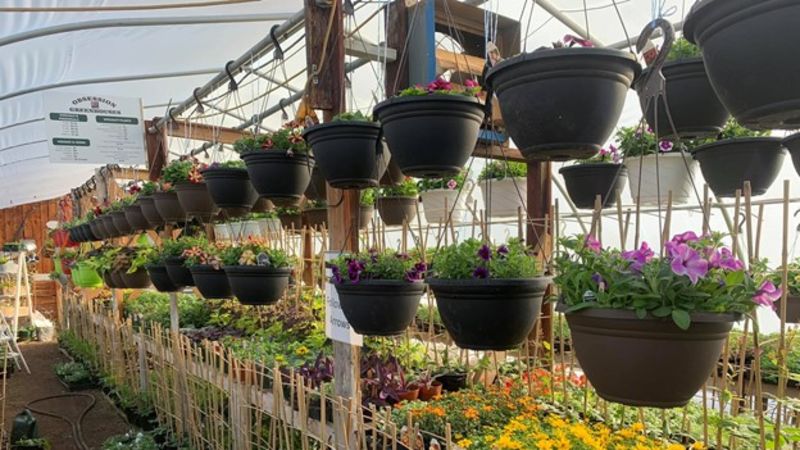
From barn to craft markets, women dominating the alpaca fleece industry
Staring out over the sea of fuzzy-headed alpacas, anyone visiting the stalls at the Canadian Western Agribition this past November would have also seen the many women who raise these walking, scowling sweater factories.
Visitors got to learn about alpaca fleece, which is the main reason they are bred and kept on farmers across Canada, and over 20 alpaca producers got to show their animals during the Saskatchewan Alpaca Breeders Network Premier Alpaca Fleece Show and the Halter Show, the furthest being from a breeder in Quebec.
One of these producers showing their animals was Diane Unruh of Altra Nova Alpacas in Hague, Sask.
Together with her sister they raise around 40 head of alpaca. Unruh told farmnewsNOW that it was a safer livestock option to raise than others considering her niece is legally blind.
“They’re more gentle, they’re just easier to kind of handle physically…250 pounds versus a 1,600 pounds (for cattle). They’re just really pleasant. They have all these amazing personalities and yeah, they’re super sweet to be with.”
While alpaca meat is palatable, the money is in fibre production, said Unruh, but markets can be challenging for small alpaca producers but there are people in the Canadian side of the industry that are trying to improve things.
Visitors did not have to look far around the vast halls of the Brandt Centre before finding other signs of the alpaca trade.
Cathy Merkley started working with alpacas in 1996 as a breeder selling into the United States and European alpaca markets. According to her website, these were the early days of alpaca farming in Canada and now she is extensively involved as a fleece judge, sorter, classer, knitter, and fibre expert along with business partners Cathy Newby and Lynn Hilderman.
There was a lot her and business partner, Trudy McCall, had to learn by trial and error when she first got into alpacas, she said.
“That was before the internet, so you couldn’t YouTube how to shear them. I had to figure it out. So, Trudy started shearing and the fleece came off and everybody looked at me and so I thought, ‘okay, this must be my job then.’”
Staffing the A Single Strand Fibre Arts Studio booth at the Sasktel Market Place, Merkley was busy serving customers but still found the chance to talk with farmnewsNOW about her products and the challenges of being an alpaca producer. The studio is a storefront that also deals in products from their wholesale company, Alpaca Naturally.
“We buy fiber from Canadian producers and sort and class the fleece we send it out for processing to Canadian mills and we get a variety of products made and wholesale those products. So we have a lot of alpaca producers that send us their fiber and buy the product from us and then they sell from the farm gate or go to craft markets,” said Merkley.
What can be a challenge for fleece producers is finding the right mill to take the fibre.
Not everyone can do everything, said Merkley, so through Alpaca Naturally, they work with producers to get the fleece out of the barns and into the marketplace.
Commercial mills only take about 500-pound lots at one time, she said, but after the fleece is sorted into specific lengths, qualities, and colours, it becomes impossible for smaller operations to fill those lots on their own.
Middle-sized mills in Alberta have been perfect for Merkley, she said, as they take lots that are around 100 lb.
“The length of the fiber determines the mill it goes to and the process it goes through and the fineness of the fiber determines the end product that it’s made into.”
And the fleece itself has many amazing qualities that make it desirable as a textile. Its softness makes it comparable to cashmeres, she said.
“It’s very warm, it’s very fine, it’s very soft, it’s hypoallergenic. It comes in a wide range of natural colors, but it also takes dye beautifully. It’s very versatile fiber. It works well on its own (but) it also blends very well with other fibers.”
With such a low maintenance but hearty animal at her disposal, Merkley said she thoroughly enjoys being part of the alpaca industry, from breeding the babies to creating the finished products.
“If you give them a half a chance, they’re going to make a better baby every single time. When you combine that with this incredible fleece that they produce, it’s just heaven, it’s just the opportunities are endless.”
Curious onlookers during the Canadian Western Agribition. (Becky Zimmer/farmnewsNOW Staff)
Alpacas and alpaca breeders have been around Canada for long enough now that they are a viable option for those who are looking for a new or different livestock operation, which is different than when Merkley first started, she said.
“We know so much more now than we did then. We’re really good at what we do. When we first got alpacas, people would say to ‘do you ride ‘em or do you eat ‘em?’ And I would say, no, neither.”

Curious onlookers stare into the depths of children’s souls during the Alpaca exhibit at the Canadian Western Agribition last November. (Becky Zimmer/farmnewsNOW Staff)
Merkley was quick to point out the amazing breeders, many of them women, who have operations throughout the prairies and who have created milling opportunities for themselves to branch out into those markets.
By the sounds of it, anyone looking for opportunities in this market are quick to find them along with a supportive network of alpaca enthusiasts.
“People are starting to look for it (alpaca products), so that fiber market, the textile market, we’ve got, we’ve got good quality products, good quality fiber, we’ve got good processing, we’ve got beautiful products,” said Merkley.

Despite their soft and fuzzy head toppings, this reporter learned that alpacas do not like head scritches. (Becky Zimmer/farmnewsNOW Staff)
Merkley laughs as she recalls people yelling about the “alpaca ladies” at recent trade shows. That was not always something she heard while trying to market these beautiful products and that demand, especially for the homemade and handcrafted, continues to grow.
And Canada has a great reputation for that.
—
becky.zimmer@pattisonmedia.com
On Twitter: @bex_zim


